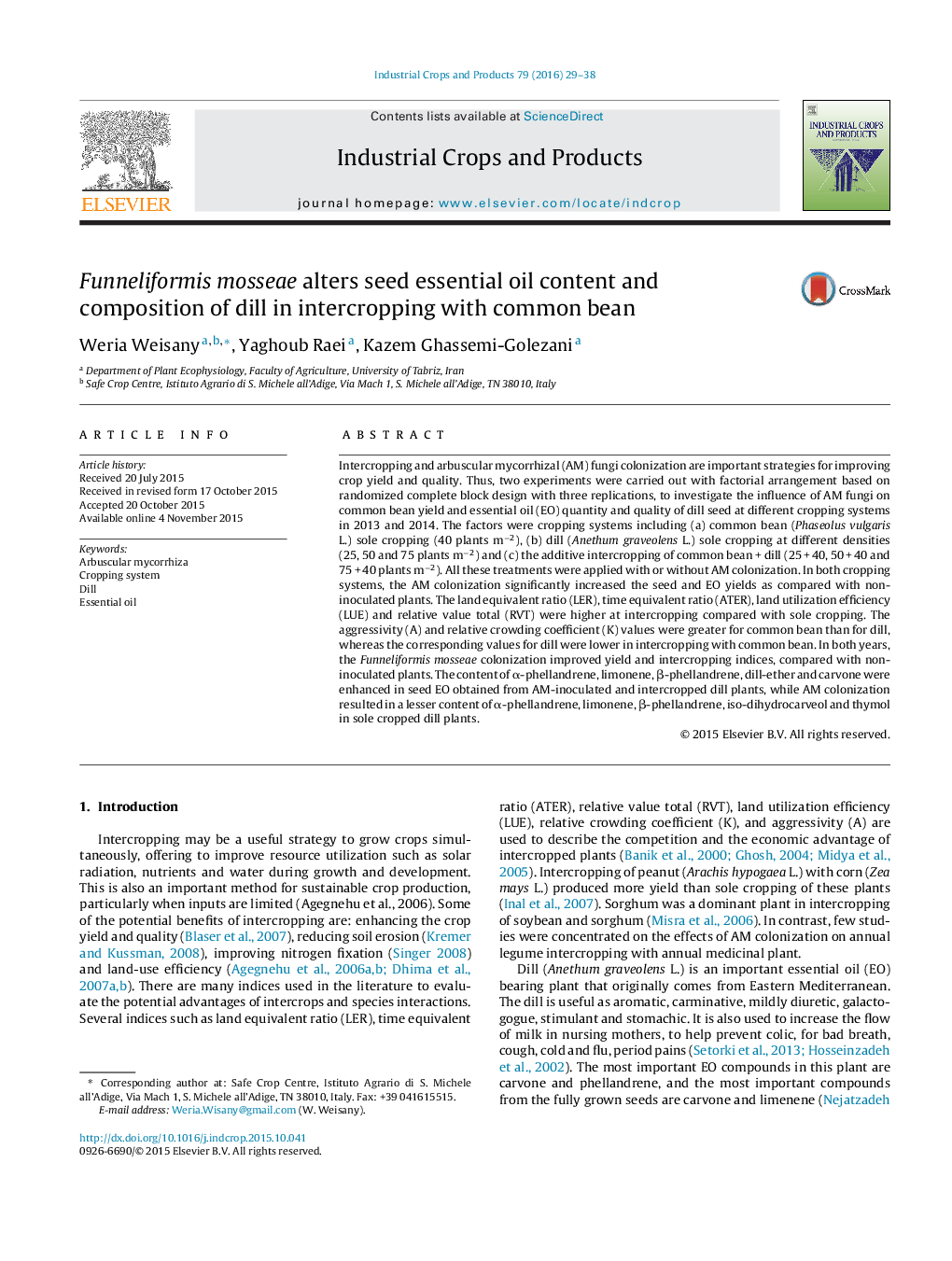| Article ID | Journal | Published Year | Pages | File Type |
|---|---|---|---|---|
| 4512724 | Industrial Crops and Products | 2016 | 10 Pages |
•Dill is an important medicinal plant and can be an important source of carvone, myristicin and apiole.•Arbuscular mycorrhiza colonization and intercropping can influence the composition of seed essential oils.•Anethum graveolens seed essential oil composition was determined using GC–MS.•Intercropping and arbuscular mycorrhiza colonization are useful tools for improving plant production.
Intercropping and arbuscular mycorrhizal (AM) fungi colonization are important strategies for improving crop yield and quality. Thus, two experiments were carried out with factorial arrangement based on randomized complete block design with three replications, to investigate the influence of AM fungi on common bean yield and essential oil (EO) quantity and quality of dill seed at different cropping systems in 2013 and 2014. The factors were cropping systems including (a) common bean (Phaseolus vulgaris L.) sole cropping (40 plants m−2), (b) dill (Anethum graveolens L.) sole cropping at different densities (25, 50 and 75 plants m−2) and (c) the additive intercropping of common bean + dill (25 + 40, 50 + 40 and 75 + 40 plants m−2). All these treatments were applied with or without AM colonization. In both cropping systems, the AM colonization significantly increased the seed and EO yields as compared with non-inoculated plants. The land equivalent ratio (LER), time equivalent ratio (ATER), land utilization efficiency (LUE) and relative value total (RVT) were higher at intercropping compared with sole cropping. The aggressivity (A) and relative crowding coefficient (K) values were greater for common bean than for dill, whereas the corresponding values for dill were lower in intercropping with common bean. In both years, the Funneliformis mosseae colonization improved yield and intercropping indices, compared with non-inoculated plants. The content of α-phellandrene, limonene, β-phellandrene, dill-ether and carvone were enhanced in seed EO obtained from AM-inoculated and intercropped dill plants, while AM colonization resulted in a lesser content of α-phellandrene, limonene, β-phellandrene, iso-dihydrocarveol and thymol in sole cropped dill plants.
Graphical abstractFigure optionsDownload full-size imageDownload as PowerPoint slide
